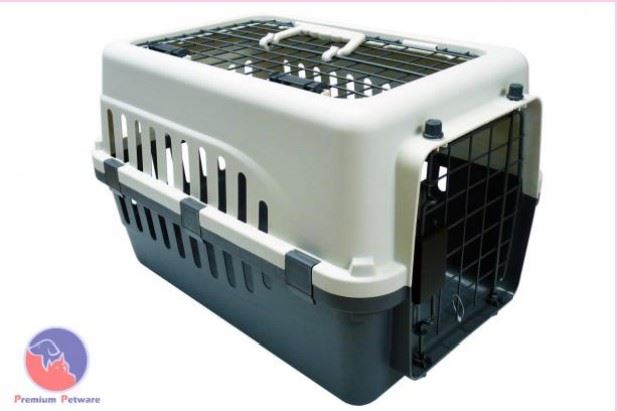How to Choose a Cat Carrier (and get your cat to like it!)

So, you need to bring your cat to the vet and you immediately feel anxious … how on earth are you going to get your cat into the dreaded carrier without any blood being spilt?
Sound familiar? You’re not alone. There are many reasons why your cat feels it would rather ‘fight to the death’ than get in their carrier. Here’s a few possibilities:
- If the cat is only ever put in the carrier when going to places they may not enjoy (e.g. the vet), the cat may only associate the carrier with an unpleasant experience. Plus, if it doesn’t like the travel component of going to such places (some cats may experience travel sickness), this would compound the negative association.
- If the cat carrier has been used by another cat, their smell may still be lingering, and the cat using it now may feel uncomfortable with that.
| Photo credit: Mark Parisi offthemark.com |
- If the cat has been forced into the carrier in the past, it may have a negative association to that handling and subsequently a negative association with the carrier.
- If the carrier is too small and the cat is squeezed in with no room to stand or turn around, it will feel more trapped and associate the carrier with that negative feeling.
But don’t lose hope!
The good news is you can help turn these negative feelings around and help your cat to have a whole new relationship with their carrier – one that is much more positive!
The first step in this ‘relationship makeover’ is to choose the right carrier. Not all carriers are created equal! Here’s some important features to look for:
- Make sure it’s made of sturdy plastic that is strong, durable and easy to clean. Flimsy cardboard versions, for example, are not appropriate for ongoing use as they are not very secure, can’t be cleaned properly and can fall apart if they get wet.
- Look for one that not only has an open-structured front door but also a top opening which offers more options for getting the cat in and out of the carrier (see pictured example).
- Preferably find one where the top half of the carrier can be easily removed, so the cat can stay in the bottom half for examination, if required, to help make the cat feel more safe and secure.

*Photo credit: Premium Petware
Carrier Sorted … What Next?
So, your carrier has all the features listed above. How do you actually get your cat to like it? Well, the key to helping your cat accept the carrier as something it doesn’t fear is to turn its negative association into a positive one. Here’s some tips on how to do that:
- Even if your current carrier has all the suggested features, remember that it may have lingering smells of bad experiences of the past. If your cat toileted or vomited in the carrier in the past, or if it was used by another cat it doesn’t know or doesn’t have an amicable relationship with, for instance, those smells may still be present. Thoroughly wash the carrier or, even better, start with a brand new one which allows you to start afresh.
- Make the carrier seem like ‘part of the furniture’. Don’t hide it away and only bring it out for vet or cattery visits. Place the carrier in an area of the house that the cat frequently spends time in (if it comes apart, just the bottom half at first, otherwise ensure the door is off or left open). Casually place it in one corner and allow the cat to investigate.
- Make it a positive, familiar place – place some of the cat’s bedding in the carrier and some favourite toys to help the cat see it as something that belongs in the environment and has their scent.
- Spray the carrier and contents with ™Feliway spray to encourage the cat to associate it with calming scents. Be sure to top up daily!
- Train your cat to see it positively – over several training sessions, lure your cat to into the carrier with treats or a toy. Start with just the bottom half of the carrier and, once they are comfortably entering and relaxing in it, add the top half (but no door). Finally, add the door (open at first and then shutting for very small moments) and reward the cat for entering and relaxing in the carrier at each step. And make sure you take treats with you on the vet visits (unless they have to fast for a procedure of course!)
Useful Links (provided from International Cat Care):
Encouraging your cat to be happy in a cat carrier
Taking your cat to the vet

Photo Credit: Catalyst Council
© Information provided by PPGA Professional Member - Andrea Carne: Cattitude – Cat Behaviour Consultant - 2022


